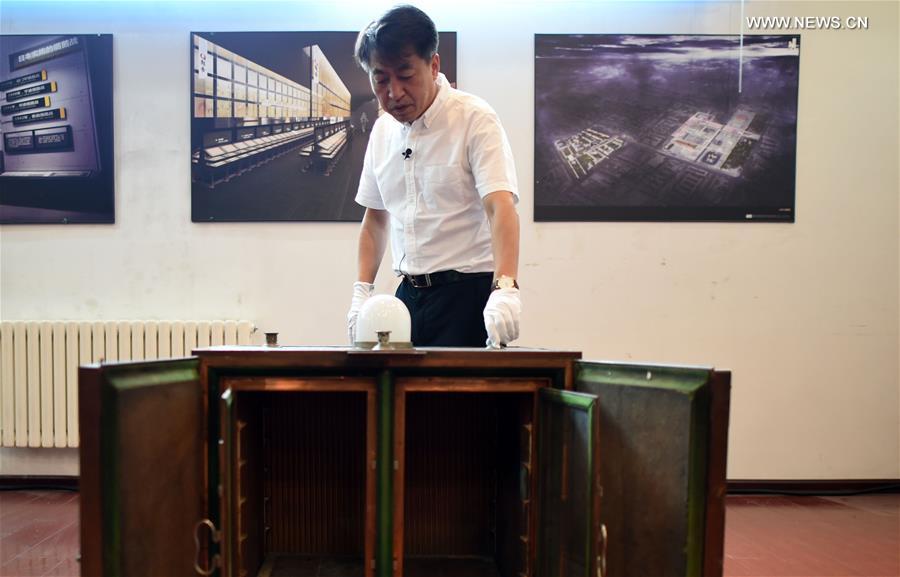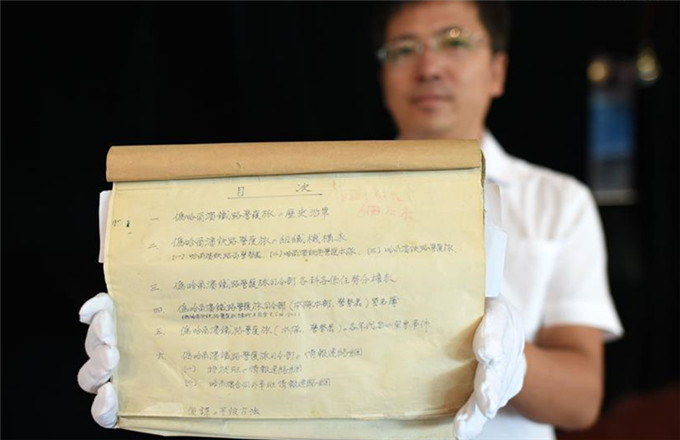New clues reveal Japan's germ war atrocities
 |
|
Jin Chengmin, curator of the Museum of Evidence of War Crimes by Japanese Army Unit 731, shows an incubator for producing plague bacillus in Harbin, capital of northeast China's Heilongjiang Province, Aug. 16, 2017. [Photo/Xinhua] New evidence of human experiments and germ war crimes by Japan's notorious Unit 731 were released by a museum on Friday in Harbin, Heilongjiang province. The Museum of Evidence of War Crimes by Japanese Army Unit 731 has added written confessions, a transportation record of human experiments, old photos of the unit's soldiers and an incubator for producing plague bacillus. "The incubator, collected from a resident in Harbin, directly proves 731's atrocities of germ experiments and development," said Jin Chengmin, curator of the museum. It also verified confessions that the base had a culture room that could produce 10 kilograms of germs in 12 or 24 hours, and four incubators that were used for biological production. Unit 731 was a top-secret biological and chemical warfare research base established in 1935, in Harbin, as the nerve center of Japanese biological warfare in China and Southeast Asia during World War II. |













